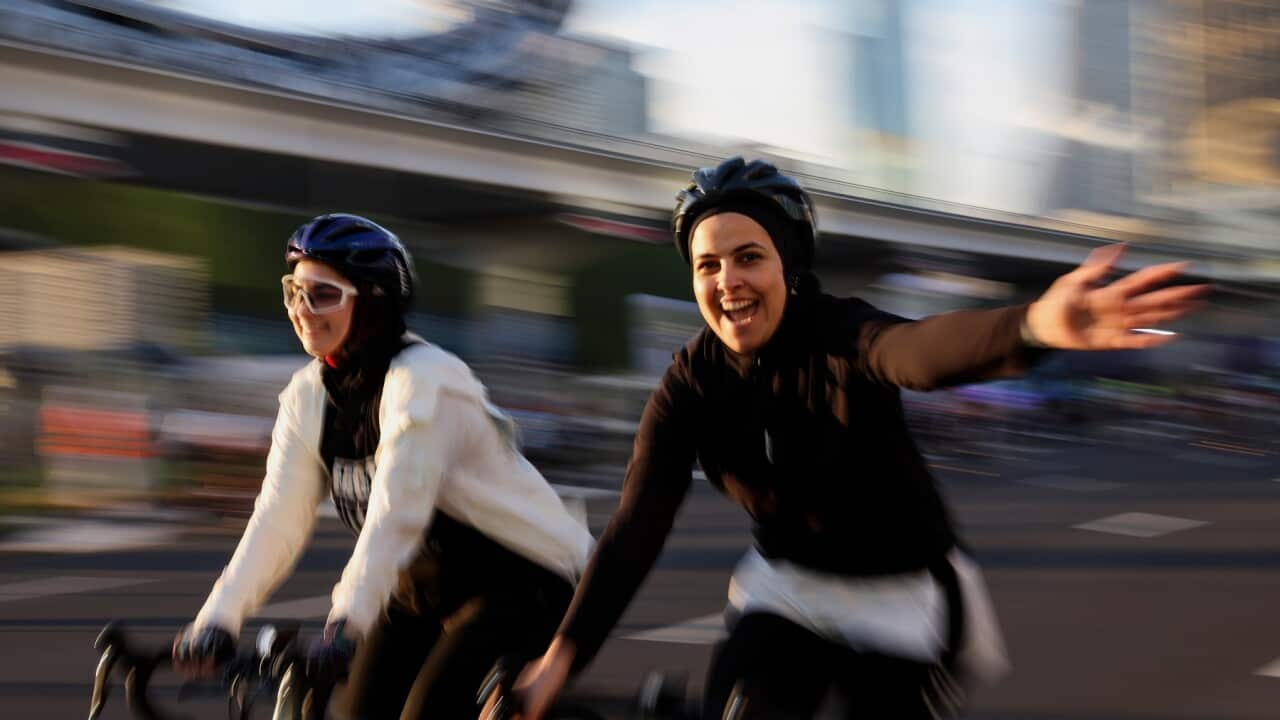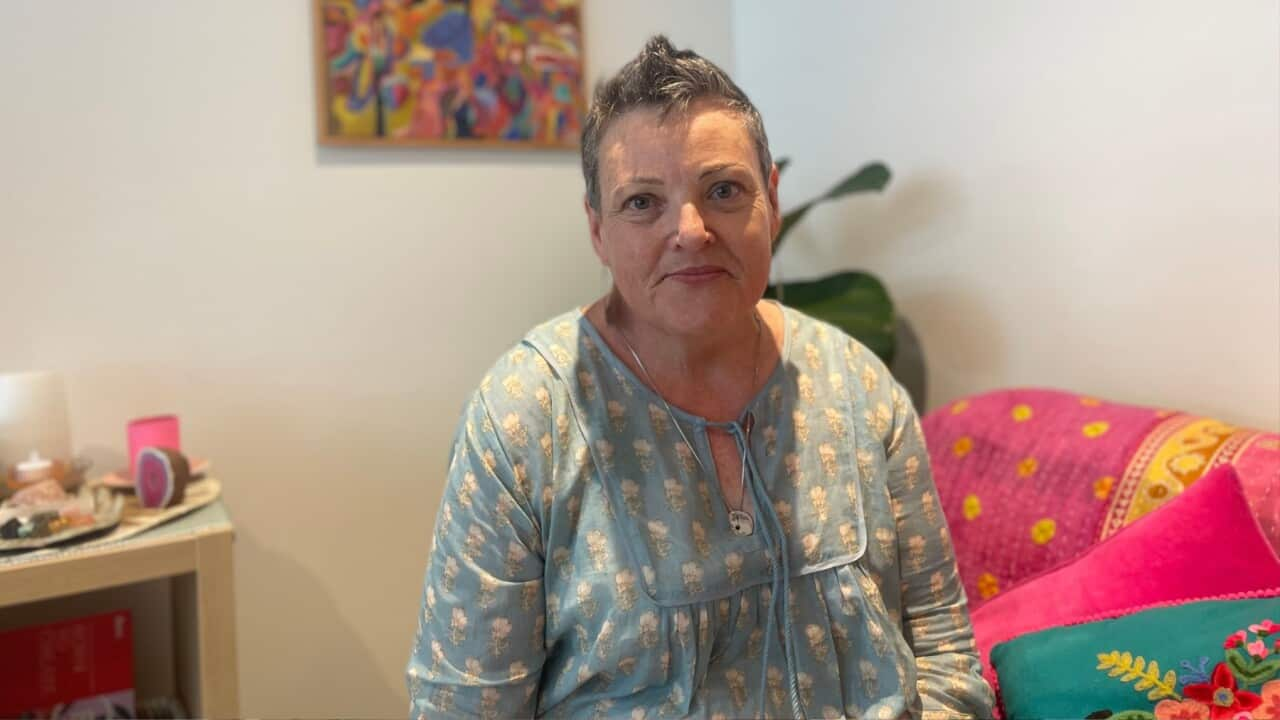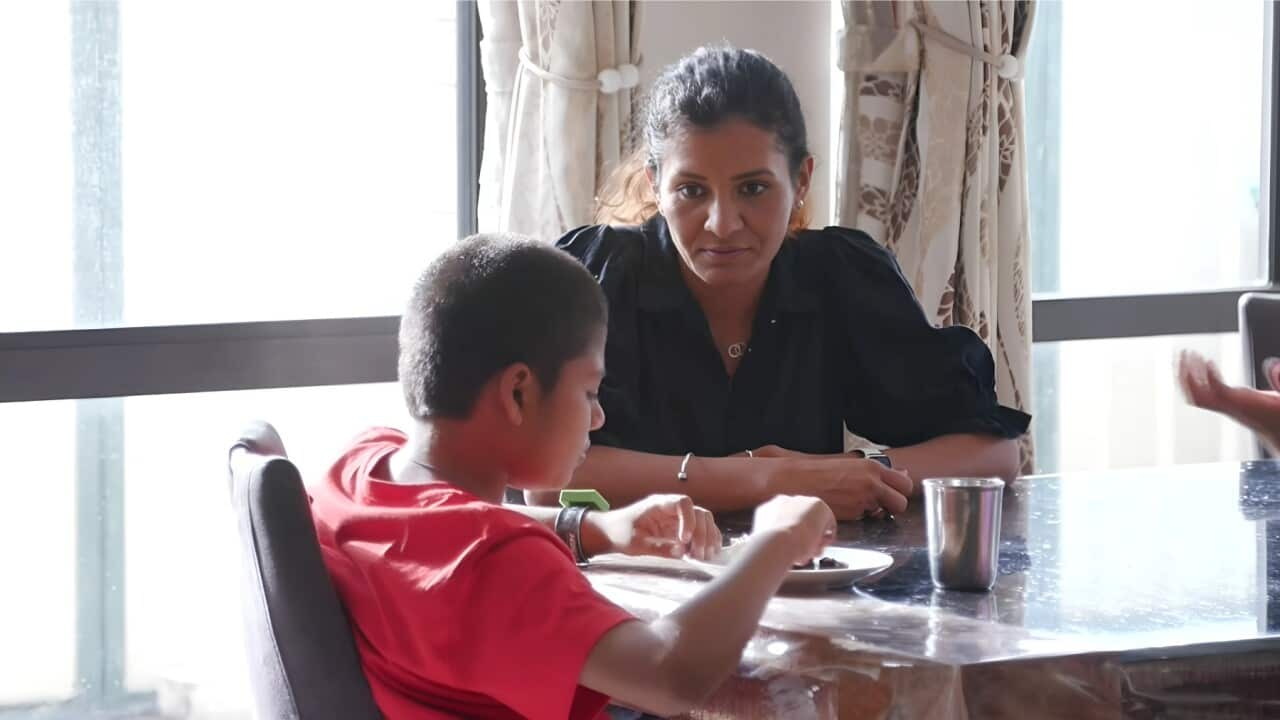Physical inactivity - or sedentarism - is a major risk factor for ill health and earlier death, according to research from the Australian Institute of Health and Welfare.
New year's resolutions often feature health goals like regular exercise, but many fail to make it stick.
Public health professor Cathie Sherrington at the University of Sydney says addressing the growing levels of sedentarism post-pandemic is proving to be challenging, but there are solutions.
For more information on Australian guidelines, visit
TRANSCRIPT
CATHIE SHERRINGTON:
It's tempting to go all out and think: I'm going to exercise every day. I'm going to do an hour a day. It's going to be awesome. But it can be better to start more slowly.
Think about something that genuinely you can integrate into your life. We are all busy with competing priorities these days; and (find) something that you will stick to. Also, I think (pick) something that either you enjoy - or you hate less than other things.
BIWA KWAN:
And if you don't have a history of exercise. You say do something you like, but what if you don't know what you like?
CATHIE SHERRINGTON:
Because we all find it a bit intimidating to start something new. So going along with someone else; and someone who can give you some tips on what to wear, how to make it work, that can be handy.
I guess the other thing is if people have any type of health concern, is really to get that medical advice. So from the GP or other specialists, or particularly from a physiotherapist or an exercise physiologist; who both professions are very skilled in movement and in really helping people get active; helping people overcome any barriers that they might have - through any particular health conditions or discomfort or anything like that.
BIWA KWAN:
And does it surprise you that when it comes to New Year's resolutions - it's a healthy lifestyle and physical activities that are always right up there amongst them?
CATHIE SHERRINGTON:
No, not at all, because I think most of us actually know that we ought to be being more active. But in our busy lives and the way our society's set up, it's actually really difficult for people to fit that in.
Various studies have identified so many different barriers that people have; and it's really challenging to overcome those. So I don't think it's surprising that New Years is a time to make a fresh start and to have a bit of a step back and think about what you might like to do differently. So yeah, for many people, resolutions about getting more active are certainly front of mind at this time of year.
BIWA KWAN:
You said the research has identified barriers. What are they? And do we have the solutions?
CATHIE SHERRINGTON:
Yeah, good question. So we quite like using a framework for behavior change called the COM-B. And so that's about having the capability, the opportunity, and the motivation. And to us that really resonates with needing to have each of those different aspects in place.
So capabilities of knowing what to do. Opportunity is living somewhere where there's somewhere to walk, or where you can be near a nice gym or inclusive community exercise place. And then the motivation is what makes us actually get to it. So it might be, it's one thing knowing what to do and knowing where to do it, but then actually (we might be missing) that motivation to make it happen.
BIWA KWAN:
Where do you see us from a public health perspective, just falling short here? (There's) the WHO Global Action Plan to reduce physical inactivity by 15 per cent by 2030. There's heaps and heaps of research on this, yet physical inactivity seems to be at a pretty high level.
CATHIE SHERRINGTON:
Yeah, that is a key issue. And that global action plan is really helpful. So it's about what individuals can do. So I guess that's what we've been talking about thus far. So they call that active people, and so there's programs provided that there's opportunities for people.
They also talk about active societies, which is actually about social norms; and it being acceptable and people supporting each other to be active. Then they talk about active environments, which is really having nice places. Having paths, particularly for people with mobility problems, having accessible toilets and things like that.
And then active policies, which is actually government support. So benefits - that might be health fund rebates or it might be subsidising exercise programs.
BIWA KWAN:
Do you see it as a public health issue?
CATHIE SHERRINGTON:
Oh yeah, absolutely. So it really does need a kind of deliberate strategy from different sectors of government to be working together. So individuals and health professionals just being sort of one piece of the puzzle, but we need broader support as well - and deliberate strategies.
BIWA KWAN:
Do we have that here in Australia when we talk about public health campaigns, we talk about skin safety. But do we need to be doing something in this space?
CATHIE SHERRINGTON:
Yeah, no, absolutely. We really do need to have an Australian plan. So there are moves happening again in that direction in terms of having more of a prevention plan for Australia, but we're not quite there yet.
BIWA KWAN:
And in terms of recovering from the pandemic, do we have a sense of how that inactivity level has dropped off - or whether it's recovered? What are the levels of sedentarism at the moment? Do we understand what the impact of the pandemic has been?
CATHIE SHERRINGTON:
Yeah, that's a great question. We haven't really got great data on that, but it does seem like that people who were at high risk throughout the pandemic...
And it was really unsafe for people to go along to community exercise and things like that, and outpatient services from health; so a lot of those things were actually stopped.
There is anecdotal evidence that a number of those people actually haven't resumed being active as a result. And we are hearing from hospitals about people coming in who are actually frailer due to those lasting impacts from being less active throughout the pandemic.
So yeah, it's not clear that we have recovered in terms of levels of physical functioning.
BIWA KWAN:
When you look at ageing and you talked about physical function, what's the critical piece there of seeing exercise as a necessity?
CATHIE SHERRINGTON:
Yeah, that's really crucial. And really throughout life, and particularly in middle age, we really need to be getting into the types of exercises which do help us to maintain function and prevent falls later in life.
So really that kind of life course approach to prevention is really what we're often missing in our society.
But then it's also not too late to start. So there's also strong evidence that starting exercise programs in older age can have benefits in terms of physical function and also falls prevention.
BIWA KWAN:
What are some of the benefits of physical activity on mental health and ageing? Why is it important - we talked about it being a public health issue - that we get onto this?
CATHIE SHERRINGTON:
Yeah, so it's really an adage that if exercise and physical activity was a pill, everyone would be investing in it. Everyone would be wanting to take it.
So there really are so many benefits. So across really so many body systems: muscles, bones, even with the way our nerves work. So many different things in our body are actually benefited from exercise. As well as clearly chronic disease prevention management, if we do have chronic diseases.
Maintaining physical function I think is a benefit of exercise that's often neglected and not talked enough about. And also the mental health benefits; and also the social benefits; and just enjoyment.
I think those of us who have managed to get in a habit of fitting exercise into our daily lives, I think we would all report that the days that we have exercised, we just feel so much better, stronger, more alert, more positive. So yeah, really I think there are so many benefits.
BIWA KWAN:
And is it correct that the research shows that as little as 10 minutes a day of walking can have measurable impacts on chronic disease reduction?
CATHIE SHERRINGTON:
Yes, definitely. Yep. And that's really important from the public health point of view, that it is clear that a little bit is definitely better than nothing. But then more is better than a little.
But that's where the building up is important. And so probably most people could actually benefit from being more active, but we do need to look at where we're currently at - and build up from there.













